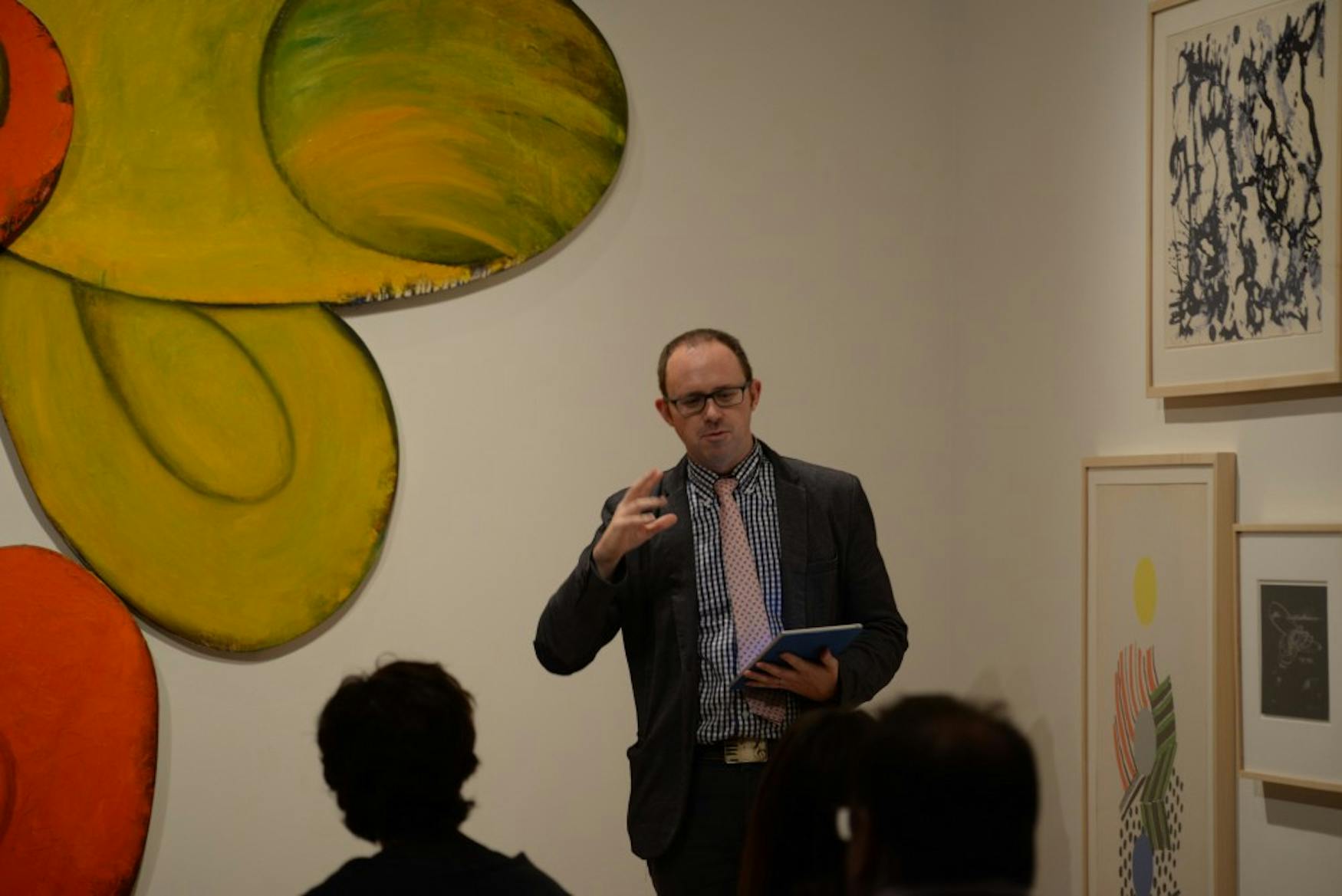Framingham professor speaks on “Duck Foot”
During a discussion of Elizabeth Murray’s “Duck Foot” on Wednesday night, participants analyzed and dissected the piece. In the middle of the discussion, an eight-year old girl raised her hand. With a clear voice, she asked the speaker, “What is it?” Noting her question, the speaker, an assistant professor of music at Framingham State University, Christian Gentry Ph.D. ’12, opened the subject to discussion: what exactly is “Duck Foot”?
Currently on view at the Rose Art Museum, “Duck Foot” is complex but compelling. The painted structure takes up a full wall in the Mildred S. Lee Gallery. It covers the space with five semi-structured shapes, interlocking and painted in fiery colors. Alternating red and orange shapes are stacked vertically, one on top of the other, with a small orange circle forming base the tower. The two-dimensional structure’s overlapping shapes are covered with painted black “holes,” making the painting look three-dimensional.
Gentry’s background in music led to some unexpected points about the interplay between how one analyzes and experiences music versus how one observes and relays art. His talk on Thursday was the latest from the series of Close Looking discussions at the Rose Art Museum. He described the painting in musical terms as some 30 participants sat in the gallery and casually discussed Elizabeth Murray’s “Duck Foot.” Gentry’s analysis aimed to add to the viewers’ experience of the painting by analyzing their reactions and perceptions of “Duck Foot” without any explanation of what exactly it was depicting.
Gentry explained that there are three basic textures in music: monophonic, homophonic and polyphonic. Texture, in music, refers to the way rhythms and harmonies are combined in a composition. Monophonic texture is when one rhythm acts on its own, making up the entire composition, for example, the song “Pop Goes the Weasel.” Homophonic texture is when the interplay of two rhythms creates the composition, Jazz music for example. And polyphonic texture is when many rhythms run their own courses and these different strands create the music, like in Renaissance music.
Gentry thought that the many colors and intersecting pieces of “Duck Foot” were reminiscent of homophonic and polyphonic movements. The art looked like it was an example of interplay between several different pieces and, at the same time, also composed of independent colors acting to create the appearance of coherence. Gentry noted that there were “moments of repose where you [were] not completely overwhelmed by [the painting]” and its many shapes and colors.
The bottom of “Duck Foot” looks incomplete, with dried green drips of paint falling toward the bottom of the red shape near the bottom of the tower. Gentry thought these drips could be the visual equivalent of a “coda”—the ending section of a work that ties it all together. Gentry suggested that the green drips made the viewers appreciate just how many shades went into these shapes, reminding them of the interplay between independence (the many colors) and harmony (the effect that these colors created together).
As the talk neared an end, Gentry pointed out that, like music, art should be an experience. People go to museums, he suggested, to see and experience art. Concertgoers have a similar experience—they listen to musical works for the sake of listening to them, thinking about them and reacting to them without necessarily liking or understanding them. This awareness of how we experience art gave new meaning to the question, “What is ‘Duck Foot’?” Gentry’s comments suggested that it’s not paramount to define art—what’s important is to see it, hear it and experience it.



Please note All comments are eligible for publication in The Justice.